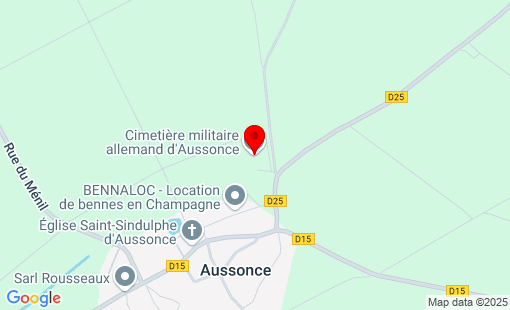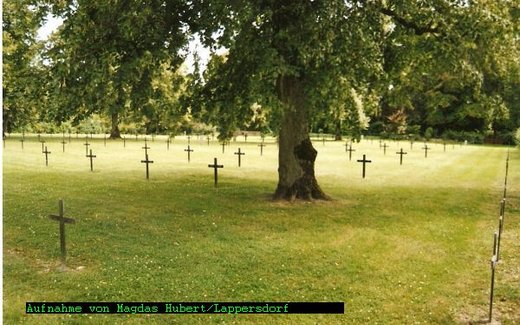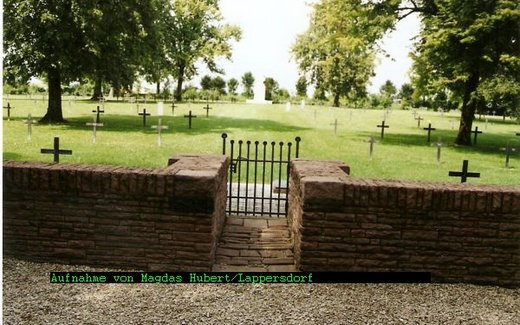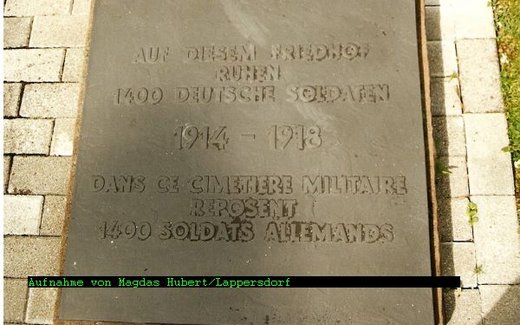France
Aussonce
Total Occupation: 1.400 fatalities
Total Occupation: 1.400 fatalities
Open all year round
This war cemetery is home to 1,400 war dead from the First World War. Département Ardennes The German military cemetery at Aussonce was established by the German troops in the spring of 1917 as a hospital cemetery. The wounded from the battle in April and May 1917 for the heights south of Moronvilliers, a place that - like neighboring Nauroy - could not be rebuilt after the war, were brought to Aussonce. Later, there were also casualties from the German offensive in July and the retreat and defensive battles in September/October 1918. A high cross made of natural stone was erected by stonemasons serving in the troops. Gardeners carried out extensive planting of trees and bushes, which determined the image of the cemetery in the landscape long after the end of the war. After the armistice, the French military administration only transferred 17 fallen Germans from a neighboring village to the cemetery. The dead resting in the cemetery belonged to units whose home garrisons were in West Prussia, Silesia, Pomerania, Brandenburg, Saxony, Lower Saxony, Friesland, Westphalia, Württemberg, Baden, Bavaria and the Rhineland. Repair work between the wars Initial work to improve the condition of the cemetery, which was limited to maintenance work on the vegetation, was carried out by the Volksbund Deutsche Kriegsgräberfürsorge e.V. (German War Graves Commission) on the basis of an agreement reached with the French military authorities in 1926. However, the problem of permanently marking the graves remained unresolved due to a lack of foreign currency and the outbreak of the Second World War in 1939. Final design Following the conclusion of the Franco-German War Graves Agreement of July 19, 1966, the Volksbund Deutsche Kriegsgräberfürsorge e.V. - with financial support from the German government - was able to undertake the final design of the German military cemeteries of the First World War in France. In addition to a fundamental landscaping overhaul, in which volunteers from the Volksbund's youth camps were also involved, the previous temporary wooden grave markers were replaced in 1973 with metal crosses bearing the names and dates of those buried here. A year earlier, young people had already moved the 35-kilogram concrete foundations for the crosses, which had been transported by the German army, to the graves. In this way, both the young people and the soldiers supported the Volksbund in fulfilling its tasks in a particularly impressive way. All 1,400 fallen soldiers rest in individual graves. For religious reasons, the eight graves of the fallen of the Jewish faith were marked with a gravestone made of natural stone instead of a cross. The Hebrew characters read: 1. (above) "Here rests buried .... ." 2. (below) "May his soul be bound into the circle of the living".



